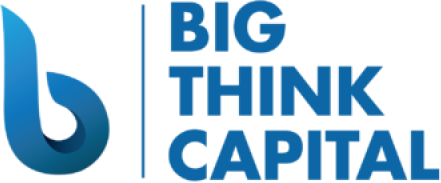Understanding the Recent Fed’s Interest Rate Decision: Strategies for Small Businesses to Optimize Working Capital Amidst Rising Costs
Estimated reading time: 6 minutes
- Assess financing options thoroughly: Understand differences between MCAs and SBA loans.
- Strengthen your credit profile: A robust business credit score is crucial for better financing terms.
- Leverage digital tools: Enhance cash flow management and streamline daily operations.
Table of Contents
- The Impact of Fed Interest Rates on Small Business Loans
- Merchant Cash Advances vs. SBA Loans in the Context of New Interest Rates
- Tips to Improve Business Credit Score for Better Financing Conditions
- Embracing Financial Digital Tools for Efficient Cash Flow Management
- Maintaining Healthy Bank Relationships in Changing Economic Landscapes
- Practical Takeaways for Small Business Owners Exploring Financing
The Impact of Fed Interest Rates on Small Business Loans
The Federal Reserve plays a crucial role in shaping the lending environment through its monetary policy. When the Fed raises interest rates to combat inflation, the cost of borrowing increases. This can significantly affect small businesses seeking financing. Here’s how recent Fed interest rate adjustments influence small business loans:
Higher Borrowing Costs
- Small businesses typically face higher rates on loans, which can increase monthly payments and overall debt obligations.
- Credit products such as lines of credit, term loans, and business credit cards may see interest rates that are steeper than in previous years.
Reduced Loan Accessibility
- Lenders may tighten their requirements, leading to increased scrutiny of credit histories and financial statements.
- Many small business owners may find it harder to qualify for traditional loans, prompting a shift towards alternative financing methods.
Shift in Financing Preferences
- As traditional routes become less favorable, small businesses may explore options like Merchant Cash Advances (MCA) or equipment financing, which may offer quicker access to funds, albeit often at a higher cost.
Understanding these dynamics is crucial for business owners as they navigate the complexities of financing in a high-interest environment. At Big Think Capital, we’re committed to helping small businesses identify the best funding strategies tailored to their unique needs.
Merchant Cash Advances vs. SBA Loans in the Context of New Interest Rates
When faced with rising interest rates, small businesses must evaluate their financing options carefully. Two popular choices are Merchant Cash Advances (MCA) and Small Business Administration (SBA) loans. While both provide access to capital, they come with distinct features that are essential to consider in light of the current economic conditions.
Merchant Cash Advances (MCA)
- What It Is: An MCA provides businesses with a lump sum of cash in exchange for a percentage of future sales. This option is often favored for its flexibility and speed.
- Interest Rates: Typically higher than traditional loans, the cost is calculated based on a factor rate rather than interest. Business owners should be mindful of the total repayment amounts.
- Fit for Small Businesses: Ideal for businesses with fluctuating sales, MCAs can offer quick cash to cover immediate needs, such as inventory purchases or urgent expenses.
SBA Loans
- What It Is: SBA loans are government-backed loans designed to support small businesses. They generally come with lower interest rates and longer repayment terms.
- Interest Rates: While typically lower than MCAs, these loans may still rise with increased Fed rates. It’s crucial to calculate how these costs fit into your business strategy.
- Application Process: The process can be lengthy and requires substantial documentation, making it less ideal for businesses needing quick access to funds.
Choosing Between MCAs and SBA Loans
When considering between an MCA and an SBA loan, business owners should assess their immediate funding needs, cash flow situation, and growth plans. The flexibility of an MCA may be tempting during tight cash flows, while the lower cost of an SBA loan may be beneficial for long-term investments.
Tips to Improve Business Credit Score for Better Financing Conditions
In a rising interest rate environment, having a strong business credit score becomes increasingly important. A higher credit score can open doors to better financing terms, even under challenging economic conditions. Here are essential tips for small business owners looking to enhance their credit profiles:
Understand Your Credit Report
- Regularly check your credit report for errors that could impact your score. Report any discrepancies promptly to ensure accuracy.
- Pay attention to your business credit score from agencies like Dun & Bradstreet, Experian, or Equifax, as these scores can vary.
Timely Payments
- Ensure that you make all payments on time, including bills, loans, and vendor invoices. Consistent, on-time payments are crucial for building a positive credit history.
- Set reminders or automate payments where possible to maintain your payment schedule.
Reduce Debt Levels
- Aim to minimize outstanding debts as a percentage of your credit limit. High utilization can negatively affect your score.
- Consider consolidating debts or negotiating with lenders for better terms if you are facing repayment challenges.
Build Positive Relationships with Lenders
- Open lines of communication with your lenders. Establishing a strong rapport can lead to more favorable terms and support in times of need.
- Share your business plans and financial goals with them to foster a stronger partnership.
Embracing Financial Digital Tools for Efficient Cash Flow Management
In today’s digital age, many financial tools are available to help small business owners optimize their cash flow management. Utilizing these tools not only aids in maintaining financial health amid rising interest rates but also enhances operational efficiency. Here are some digital solutions worth exploring:
Cash Flow Management Software
Invest in software that offers real-time insights into your cash flow. These tools allow you to track income and expenses, forecast future cash flow needs, and identify potential shortfalls.
Invoicing and Payment Solutions
Implement digital invoicing tools that streamline the billing process. Encourage customers to pay early by offering discounts for upfront payments, improving cash flow.
Budgeting Apps
Use budgeting apps to set spending limits for various aspects of your business. This helps in monitoring financial performance and adhering to your financial plans.
Financial Reporting Tools
Implement tools that help generate detailed financial reports. Understanding your financial position helps in making informed decisions about expenditures and potential financing needs.
Maintaining Healthy Bank Relationships in Changing Economic Landscapes
Strong relationships with financial institutions can be a vital asset through fluctuating economic conditions. Here’s how small businesses can strengthen ties with banks and financial partners:
Open Communication
- Regularly communicate with your bank regarding your business operations. Transparency can build trust and encourage support during lean times.
- Discuss your funding needs and financial strategy openly. Often, lenders appreciate proactive communication from their clients.
Annual Financial Reviews
- Offer to conduct annual reviews of your financial statements with your bank representatives. This can help them better understand your business and provide tailored financial products.
- Maintaining up-to-date records ensures that banks have a clear view of your financial stability.
Seek Advice
- Don’t hesitate to seek guidance from your bank regarding financial matters. Many institutions provide consulting services that can help streamline operations and finance strategies.
- Leverage their expertise to navigate the complexities introduced by rising interest rates.
Practical Takeaways for Small Business Owners Exploring Financing
As small businesses adapt to the economic landscape of 2025, especially with rising interest rates, here are three key takeaways:
- Assess Financing Options Thoroughly: Understand the differences between MCAs and SBA loans, assessing which option aligns best with your current needs and financial outlook. Do not hesitate to consult with experts to explore the most suitable financing routes.
- Strengthen Your Credit Profile: A robust business credit score is your ticket to better financing terms. Prioritize timely payments and actively manage your credit with transparent lender relationships.
- Leverage Digital Tools: Embrace financial digital tools that not only enhance your cash flow management but also streamline daily operations, ensuring your business can thrive despite rising costs.
In conclusion, while the Fed’s interest rate decisions may present challenges, they also drive small business owners to explore new strategies for managing capital and growth. At Big Think Capital, we are dedicated to helping small businesses navigate the complexities of funding through tailored solutions that align with your operational goals.
For personalized assistance and to learn more about your financing options, visit us at bigthinkcapital.com or speak with one of our funding experts today.
Frequently Asked Questions (FAQ)
1. What are the main differences between MCA and SBA loans?
MCA offers quicker access to funds with higher costs, while SBA loans typically have lower interest rates but longer application processes.
2. How can I improve my business credit score?
By regularly checking your credit report, making timely payments, reducing debt levels, and building positive relationships with lenders.
3. What digital tools can help manage cash flow?
Cash flow management software, invoicing and payment solutions, budgeting apps, and financial reporting tools are highly beneficial.






